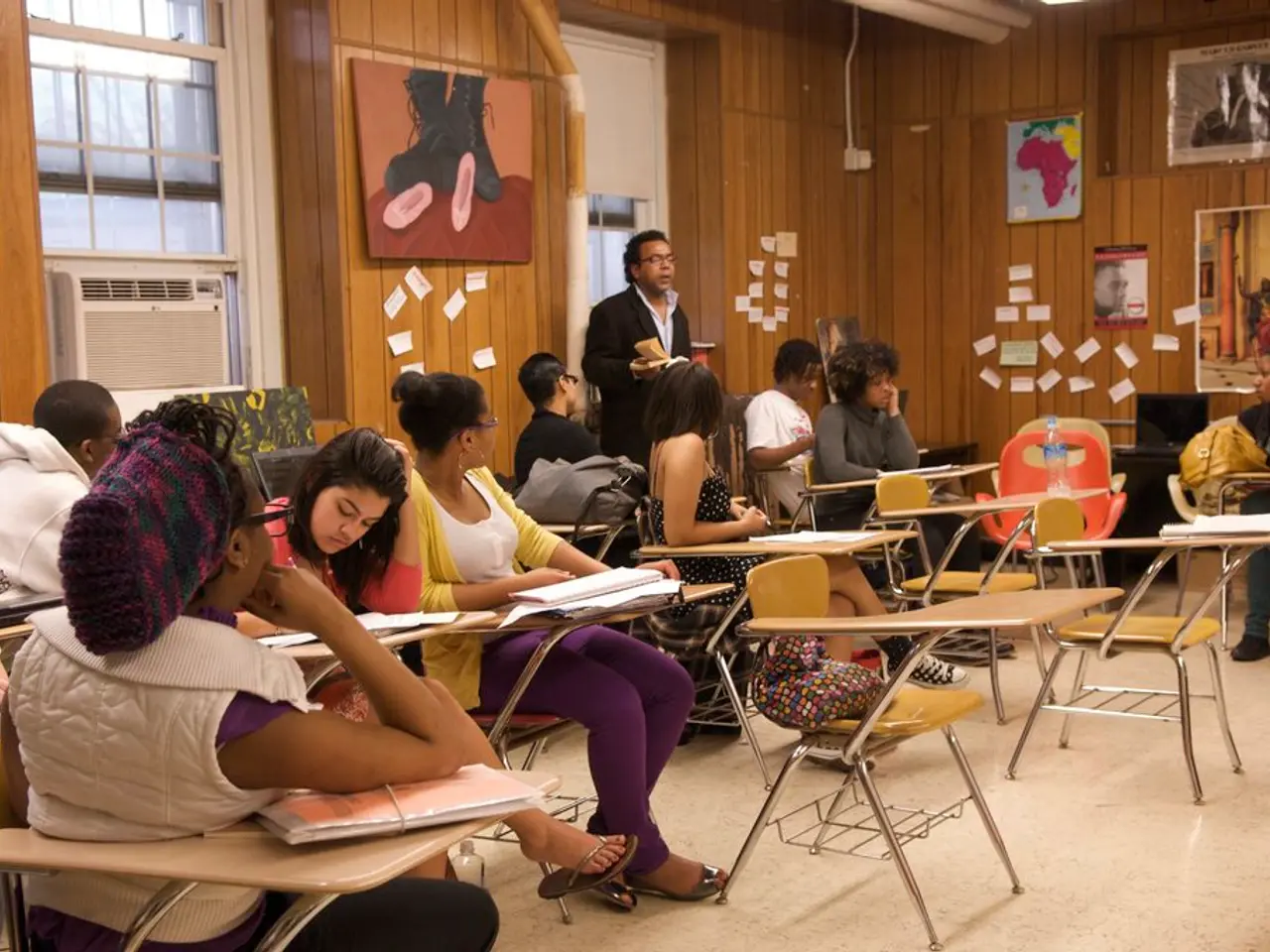Key Distinctions: Practical Learning versus Conventional Evaluations Challenging Conventional Education Frameworks
In the realm of education, two fundamental approaches to learning assessment have emerged: experiential learning and traditional assessments. Each method offers unique benefits and drawbacks, and understanding these differences is crucial for preparing students for the modern workforce.
The Advantages of Experiential Learning
Experiential learning, which involves students collaborating on complex challenges that mirror real workplace dynamics, offers several significant advantages over traditional assessment methods.
Better Retention and Deeper Understanding
By applying knowledge in real-world contexts, students can achieve about 75% retention—far higher than the 10% typical from passive reading [1]. Active engagement through experimentation and problem-solving solidifies learning on a practical level [5].
Higher Engagement and Motivation
Because experiential learning involves hands-on practice and real scenarios, learners find it more relevant, interesting, and motivating. This active involvement respects adults’ preference for self-directed, applicable learning [1].
Development of Critical Skills
Experiential learning promotes curiosity, problem-solving, metacognition (thinking about one’s own thinking), and adaptability, all vital in the unpredictable, dynamic modern work environment [5].
However, experiential learning isn't without its challenges. Some learners may struggle with the flexible, open-ended nature of experiential approaches, especially if they thrive on routine and clear benchmarks typical of traditional methods [3]. Less structured environments can also increase peer conformity pressure and distractions, possibly detracting focus from core academic or professional objectives [3]. Effective experiential learning requires careful design focused on reflection and cognitive processes. Simply doing hands-on activities without reflection is insufficient, and it may be difficult to standardize assessment without clear predetermined criteria [5].
The Benefits of Traditional Assessments
Traditional assessments provide a structured curriculum with clear expectations, routine, and measurable outcomes. Social interaction and development of discipline are also strong points. They offer stability and can suit learners who prefer competition and clear success indicators [3].
However, traditional assessments can be rigid, less engaging, and may not cater well to diverse learning styles or foster skills like critical thinking or adaptability that modern workplaces demand [3]. The delayed feedback system in traditional assessments means students may repeat the same mistakes across multiple assessments before receiving guidance.
Bridging the Gap: A Balanced Approach
A balanced integration of both approaches is often most effective in preparing students for contemporary work environments [1][3][5]. Experiential learning bridges the gap between classroom concepts and real-world challenges, while traditional assessments offer structure, routine, and measurable outcomes.
Experiential learning assessments challenge students to tackle authentic problems that mirror workplace scenarios, providing constant feedback loops that help students improve their skills in real-time. These assessments evaluate students through portfolios, project presentations, peer collaborations, and self-assessments.
On the other hand, traditional assessments primarily test memorization and recall of facts, formulas, and concepts, limiting evaluation to within specific subjects. They rely on standardized formats like multiple-choice tests, essays, quizzes, and final examinations.
In contrast, experiential learning methods evaluate students through active participation and real-world challenges, transforming students from passive observers into active contributors who shape their own educational journey. This approach prepares students for the modern workforce, where collaboration, critical thinking, and adaptability are essential.
The shift away from traditional standardized testing occurs because it doesn't adequately prepare students for the modern workforce or reflect their true abilities. Traditional assessments primarily test students' ability to store and retrieve specific information under timed conditions, ignoring creative expression, collaborative abilities, practical application skills, emotional regulation, and interpersonal communication that define workplace success.
In conclusion, while both experiential learning and traditional assessments have their merits, a balanced approach that leverages the strengths of both methods is key to preparing students for the modern workforce. By fostering active engagement, retention, practical skills, and adaptability, experiential learning offers a powerful tool for preparing students to thrive in today's collaborative workforce. However, the structure, routine, and measurable outcomes provided by traditional assessments remain essential for ensuring students develop the discipline and foundational knowledge necessary for success.
[1] Kolb, D. A. (1984). Experiential learning: Experience as the source of learning and development. Prentice-Hall.
[3] Hmelo-Silver, C. E. (2004). Problem-based learning: An instructional design framework for the 21st century. Educational Psychologist, 39(1), 3-20.
[5] Jonassen, D. H. (2000). Cognitive tools for problem-based learning. Educational Psychology Review, 12(2), 115-148.
Experiential learning, a form of education-and-self-development, is instrumental in achieving personal-growth and learning by applying knowledge in real-world situations, resulting in better retention and deeper understanding compared to traditional assessments. Furthermore, experiential learning promotes the development of critical skills such as problem-solving, metacognition, and adaptability, which are vital for the modern workforce.
Traditional assessments, on the other hand, provide a structured curriculum with clear expectations and measurable outcomes, making them beneficial in fostering discipline and social interaction. However, they may not effectively prepare students for the modern workforce as they focus on memorization and recall, neglecting the importance of critical thinking and adaptability.




